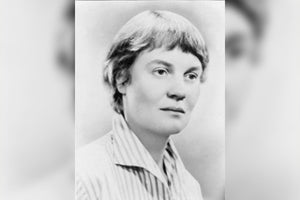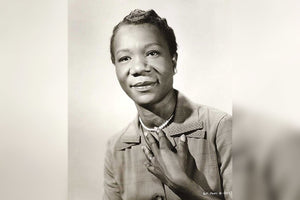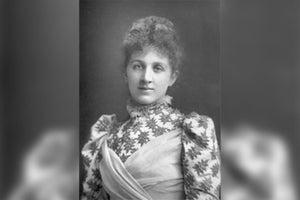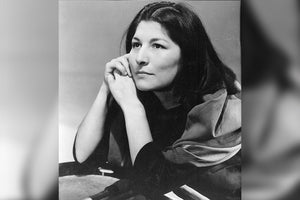Birthday: Nov 7, 1878
Who is Lise Meitner?
Lise Meitner was an Austrian physicist who was part of the team that discovered, explained and foresaw the explosive potential of nuclear fission. She has made great contributions in the 20th century as a woman scientist.
Five Facts About Lise Meitner:
- Lise Meitner was the third of eight children.
- She loved mathematics from an early age.
- She was the first woman to get a doctorate degree from the University in Vienna, and second in the world.
- Lise made the discovery that nuclear fission can produce large amounts of energy.
- She never married and had no children
Inspiration Quotes from Lise Meitner
“Life need not be easy, provided only that it is not empty.”
Lise Meitner Biography
Early Life
Lise Meitner was born in 1878 on November 7, in Vienna, Austria Hungary. She comes from a Jewish family of eight children, and she was the third child. Her father, Phillip Meitner, was a lawyer and chess master, and her mother Hedwig Skovran, was an amateur musician.
Although her family were non-religious Jews, they converted to Christianity later. Growing up in the Austrian setting, Meitner was not able to attend college because of the restrictions on female education.
Formal schooling for Austrian girls ended at age 14 and this means she attend grammar school like her brothers. However, her family was able to afford private education and her father hired private tutors to educate her.
After completing her private education in 1901, Meitner went to the University of Vienna for her graduate education. At the age of 22 years, she studied physics and got inspiration from her teacher, physicist Ludwig Boltzmann.
She grasped all she could from him and passed her doctoral oral exam in December 1905. She then graduated with a Ph.D. in physics in February 1906.
Mission and Work
With her doctorate in hand, Meitner went to University of Berlin where she attended Max Planck classes. In 1907, Meitner joined an enthusiast chemist, Otto Hahn in the Berlin’s chemistry faculty.
In 1912, both Meitner and Hahn were put in charge of a section in Kaiser Wilhelm Institute of Chemistry in Berlin.
In 1914, Germany got into the World War I. During this time, Meitner, like other female scientists; Marie and Irene Curie, did X-ray work at the front line to help wounded soldiers. In 1916, she went back to research work even though the war had not yet ended. Although she felt like she was abandoning the soldiers, her research work was her life.
Hahn and Meitner became research partners, and they were the first to isolate the isolate protactinium-231 in 1917. They also studied beta decay and nuclear isomerism. The two worked together for almost 30 years and they became very good friends.
They worked together and independently in the field of nuclear physics and competed with famous scientists like Irene Curie and Freeric Joliot. Fritz Strassmann later joined the team in 1930s and they investigated the products of neutron bombardment of uranium.
At age 38, Meitner received a professional recognition at last. She received the Berlin Academy’s Leibniz medal for the discovery of protactinium. She then became the Director of Radiation Physics at Berlin’s Kaiser Wilhelm Institute and was later appointed by the university as a physics lecturer in 1922.
In 1938, Germany annexed Austria and Meitner was forced to flee to Sweden. Although she continued her work at Stockholm’s Manne Siegbahn Institute, she got little support because of the predisposition for women in science.
However, Hahn and Meitner continued to meet privately and did new rounds of experiments. This led to the discovery of nuclear fission. In 1944, Hahn was awarded for this discovery with the Nobel Prize for Chemistry. However, Meitner was not awarded. This was partly rectified in 1966, when Meitner, Hahn and Strassman were awarded the Enrico Fermi Award.
Legacy
In 1960, Lise Meitner suffered a broken hip, and she went to live in Cambridge, UK. She later died on October 27, 1968, at the age of 89. This is after she suffered another broken hip and several strokes.
Although Meitner was not honored with a Nobel prize, she received a greater honor in 1997. This is after element 109, which is the heaviest known element in the world, was named Meitnerium (mt).
Her contribution to the nuclear fission inspired Albert Einstein and Leo Szilard to contact President Roosevelt. This led to the formation of the Manhattan Project.
Also, Meitner has been dubbed as the mother of the atom bomb, even though she highly disapproved the use of the nuclear fission by the military. In 1946, she visited the United States, where she was given American press celebrity treatment. She was given this status as one who had “Left Germany with a bomb in my purse.”
She is also considered as the most significant woman scientist in the world. When she died., she was buried in St James Church and her tombstone has the engraving, “A physicist who never lost her humanity.”
![]() Fast Shipping
Fast Shipping![]() Subscribe to our Newsletter
Subscribe to our Newsletter![]() 🌟 New Global Competition 🌟
🌟 New Global Competition 🌟















